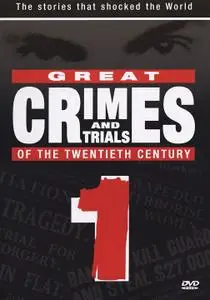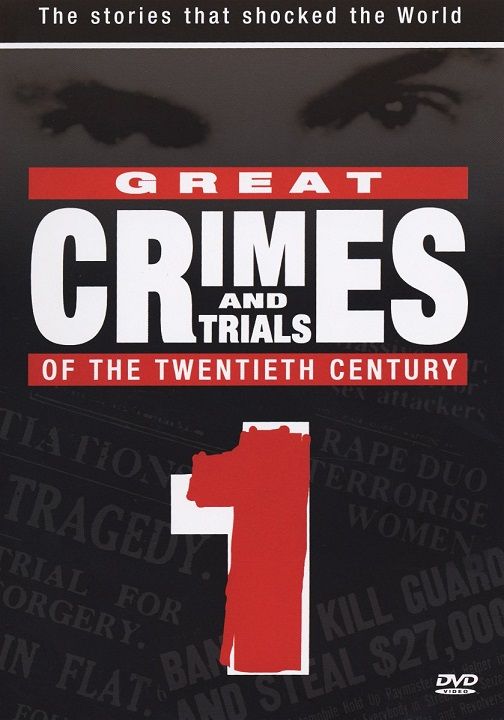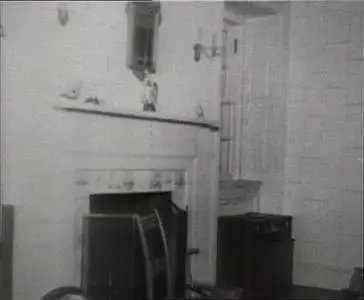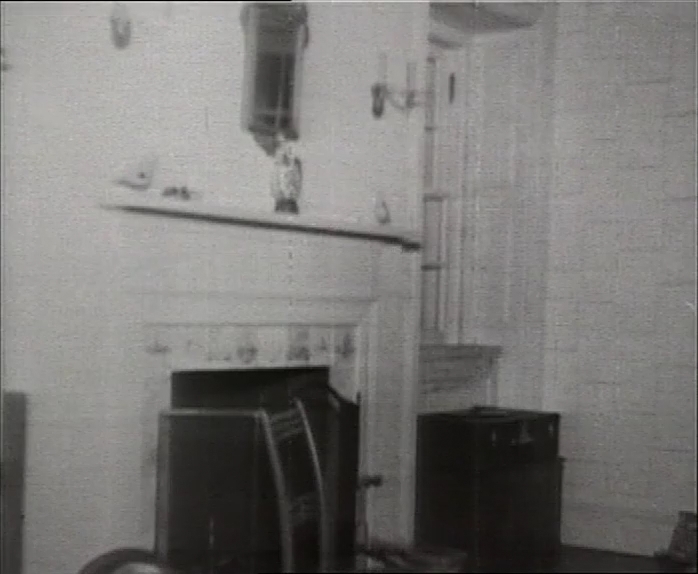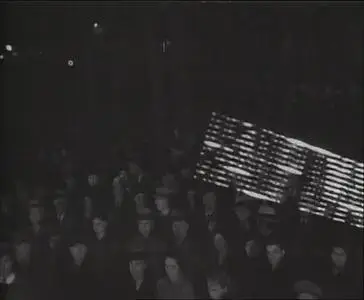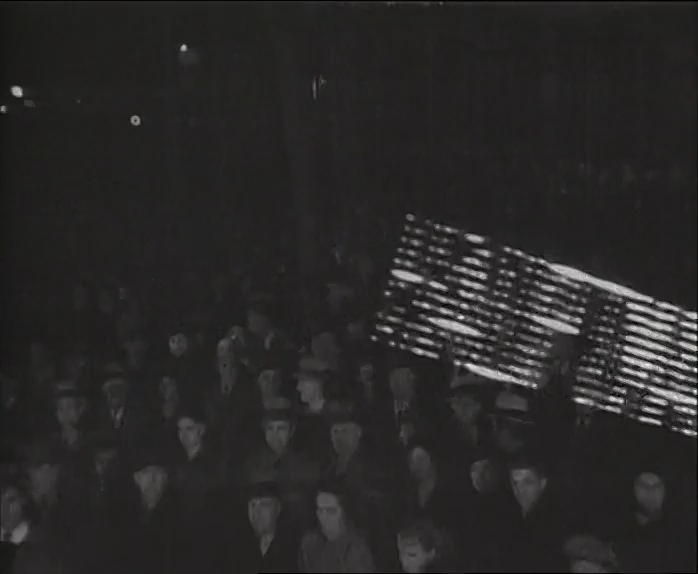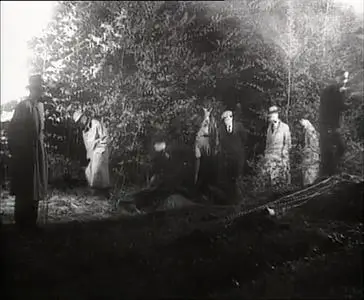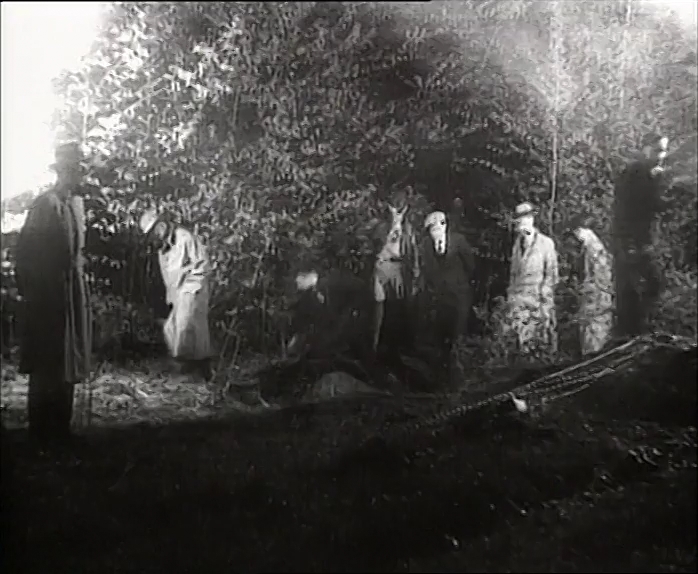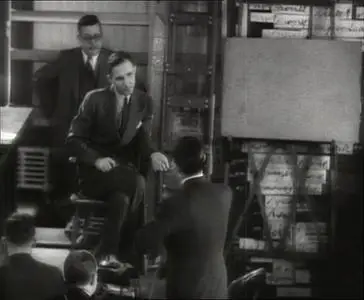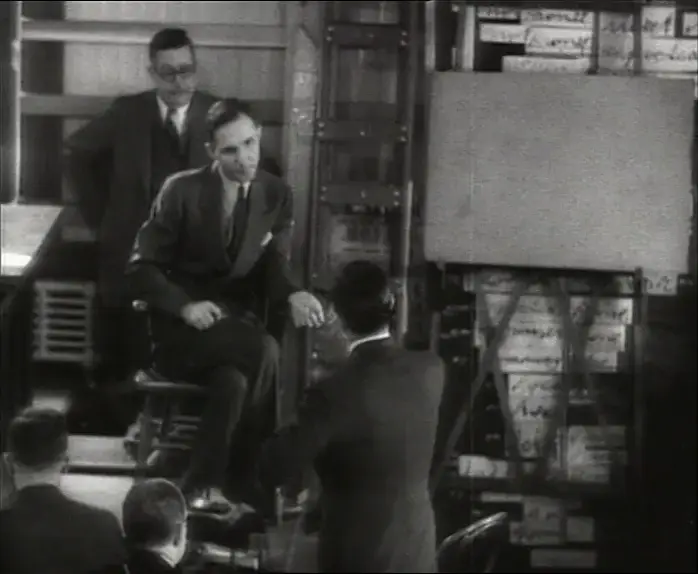A&E - Great Crimes and Trials of the 20th Century: Series 1 (1992)
DVDRip | 687x574 | .MKV/AVC @ 1287 Kbps | 20x~26min | 5.23 GiB
Audio: English AAC 160 kbps, 2 channels | Subs: None
Genre: Documentary
An insight into the criminal mind, this is a major series of the most extraordinary stories behind the greatest crimes and trials of the century. Serial killers, gangsters, assassins and war criminals - Great Crimes and Trials sheds light on 26 crimes that shocked the world, bringing back memories of some of the most notorious cases of the twentieth century.
True stories carefully researched and reconstructed with actual archive footage are all covered here in exacting detail, alongside other shocking stories of murder and mayhem. Cases which have become almost legendary in the annals of crime and detection, each episode combines archive with new interviews to reconstruct one story, coming face-to-face with the felon, analysing the individual and his motive, explaining how the crime was committed and showing breakthroughs in investigations alongside details of the trial.
Narrated by Robert Powell, this gripping and absorbing series charts the crimes of 26 of the most infamous villains ever including Dillinger, Manson, The Yorkshire Ripper, Jack the Stripper and Dr Crippen. With its researchers gaining unprecedented world-wide access to picture libraries, syndicated sources and over 250,000 hours of archive footage, these are the definitive accounts of these appalling murders containing much material that has never been seen before.
Produced by Nugus/Martin Productions in association with Arts and Entertainment Network
Part 1: The Lindbergh Baby Kidnap
The headlines were shocking: the child of the nation's hero had been kidnapped. It was a crime that shattered America. A case so improbable that nobody ever dreamed it could happen. Despite a ransom being paid, after 72 days the body of American legend Charles Lindbergh's kidnapped baby son, was found murdered.
There was a national outpouring of sympathy, but the investigation stumbled from beginning. When the ransom money was traced to an immigrant carpenter, it seemed an open and shut case. A German carpenter was tried, sentenced and sent to the electric chair, but to this day it is not known if he acted alone… Inconsistencies that remain unsolved raise the question of whether justice was served.
Part 2: Lucky Luciano and the Mob
Lucky Luciano started out as a violent street thug, but soon became a skilful and ruthless leader, who fast rose to the top of the Mafia in the early 1930's. He was a brutal killer with the imagination to mastermind the organisation of the gangs into a powerful national force; a gangster who always kept one step ahead of the law and infamously once boasted, 'I buried hundreds of guys'.
At the height of his power, "Lucky" Luciano had a New York mayor and police chief on his payroll. Even U.S. government sought help during World War II. Thanks to crusading prosecutor Thomas Dewey, Luciano was deported in 1946. He vowed to return and was true to his word: after his death in Italy, Lucky Luciano was buried in a New York grave.
Part 3: The Story of Al Capone
On St. Valentine's Day 1929, the brutal massacre of six gangsters in a Chicago warehouse signalled the emergence of Al 'Scarface' Capone as the undisputed Godfather of crime. Born in 1899, he committed himself to a life of corruption and extortion, firstly on the streets of New York and the Chicago, at the start of prohibition. He was vain, violent and notoriously ruthless. A man who won ultimate respect by exacting total fear.
He rose from a lowly runner for Brooklyn gangsters to king of the Chicago mobs. It's estimated that along the way, bootlegger Al Capone ordered over 400 murders. But when a federal agent Eliot Ness and his 'Untouchables' penetrated Capone's inner circle, the reign of "Scarface" was over. He was eventually brought to justice for one of his lesser crimes–tax evasion. A landmark legal strategy sent Capone to infamous island prison Alcatraz and marked the beginning of his tortured final days.
Part 4: Son of Sam
His name struck fear into the hearts of New Yorkers and brought terror to the streets. He unleashed all his hatred on the one group which he considered had rejected him the most - women.
From his unhappy childhood through his lonely adult life, David Berkowitz never seemed to fit in. But as Son of Sam, he captured the attention of New York City and the world. As police tracked a strange trail of notes and clues, Berkowitz claimed victims around the terrified city. In the end, a simple parking ticket tied Berkowitz to the crimes, ending his year-long reign of terror.
Part 5: The Hillside Stranglers
Within weeks, the hillsides around Los Angeles became the scene of a terrible carnage - more than ten strangled corpses. The police soon realised they were no longer dealing with a serial murderer but hunting something frighteningly new - two killers, who were out on a 'spree'.
Kenneth Bianchi and Angelo Buono were cousins who shared a chilling curiosity: what was it like to kill someone? As the body count mounted around Los Angeles, the investigation intensified. But the real break in the case came from Bellingham, Washington. After a slip-up during questioning, one cousin turned witness against the other and put the Hillside Stranglers away.
Part 6: John Dillinger: Public Enemy No 1
In the world of gangsters, he was notorious, ruthless – a man destined to become a legend. He turned to crime out of boredom and soon found it was too addictive to give up. Together with his gang he blazed a trail across the states of America robbing banks with a violent and authoritative ease. Luck was always on his side and his frequent escapes from the police and even prison won him an infamous respect.
John Dillinger was in trouble with the law early in life, and in one of his first stays in prison he learned the ways of the criminal world. This "education" served him well as Dillinger earned the title of Public Enemy Number One with daring robberies and defiant escapes. But his legend ended with a blazing final stand and an important victory for Melvin Purvis and the FBI.
Part 7: The Manson 'Family' Murders
Charles Manson was the ultimate hippie leader with a difference. Together with his cult followers he pioneered a new revolution - a helter-skelter of bloody, calculated and remorseless killing that brought a new, sinister meaning to the term - 'The Family'.
August 1969. Charles Manson decrees to his followers that it is time for "Helter Skelter." Thus begins a brutal string of crimes that shock Hollywood and the nation. At first, the horrible acts are thought to be unrelated. But with a few breaks, the police begin to piece together the incredible story of twisted loyalty, hard drugs and murder. In a series of trials that hold more than a few surprises, Manson and his followers make the most of the limelight. Prosecutor Vincent Bugliosi tells his own psychological tug-of-war with Manson and and the novel legal strategy that brought the entire "family" to justice.
Part 8: The Jonestown Massacre
In November 1978, deep in the jungles of Guyana the Rev. Jim Jones gathered nearly 1,000 devoted followers around him, and with a simple promise persuaded them to commit the greatest 'revolutionary' mass suicide of the 20th Century. It was a crime that defied the imagination.
The questionable practises that drove Jim Jones and his cult to the jungles of Guyana in 1977 continued to raise questions in the United States. Suspecting that some members were being held agains their will, Rep. Leo Ryan led a delegation to investigate. The initial reception was cordial. But in a psychotic, paranoid final act, Jim Jones led a mass suicide claiming over 900 victims.
Part 9: Dr Jeffrey MacDonald: The Green Beret Killings
American army doctor Jeffrey MacDonald seemed to have everything going for him, good looks, charm, a commission in the Green Berets, a pretty wife and two daughters. Then one night his wife and children were horrifically murdered.
The caller to the Fort Bragg military police was distraught. Dr. Jeffrey Macdonald, a Green Beret captain, told of an attack on his family by drug-crazed hippies. On a blood-soaked rug lay a paring knife. On the board of a double bed word 'Pig' had been daubed in blood.
But the evidence painted a different picture. While an initial Army investigation declined to charge MacDonald, five years later he was convicted of the murders of his wife and two young daughters. Had it not been for the determination of one person - his father-in-law - justice might never have been done.
Part 10: The Trials of Dr Sam Sheppard
He was young, handsome and successful - the ideal of American manhood. But when his wife was found battered to death, for him the American dream turned into a nightmare. Convicted of murder, it took him 12 years to establish his innocence and have his conviction overturned.
On Independence Day,1954, the American dream ended for Dr Samuel Sheppard. Then affluent Bay Village, Ohio was shocked by the brutal murder of Marilyn Sheppard, wife of a prominent local physician. Even more astounding was the prime suspect: the doctor himself. The trial was quick and decisive. But was it fair? For the next ten years, Sam Sheppard worked to prove his trial was unfair and his conviction unjustified.
Sheppard's trial was turned into a media carneval by a hysterical press crusade – even before it started, it was reported that the authorities were convinced he was 'guilty as hell'. Although the evidence against him was weak, his defence efforts were poor and he was convicted and sentenced to life imprisonment. Only after he had spent quarter of his life in jail did Dr Sam Sheppard get the justice he deserved.
Part 11: Neville Heath: The Ladykiller
In June 1946 after six years of war a girl was found whipped and murdered in a cheap London hotel. The hunt was soon on for a suave and sinister ex-RAF pilot who showed little remorse or concern when he was sentenced to hang.
The "war hero, conman and killer" Neville Heath was a shameless petty criminal, and created a fantasy persona for himself with which to impress the 300 women in his address book. Heath, a former RAF pilot who had been court martialled more than once, had a criminal record encompassing theft and deception, including occasionally wearing a uniform to which he was not entitled. The two murders he committed, of Margery Gardner and Doreen Marshall, were horrific in their callous and sadistic brutality yet he cultivated what he imagined to be the role of the debonair cad of the era. When he was finally arrested, he responded "oh, all right".
Part 12: Ted Bundy: The Serial Killer
Women began to disappear in the Seattle area in the first half of 1974. Almost on a monthly basis after that other women mysteriously vanished - then on the grass hillside near Lake Sammanish the remains of some decomposed bodies were found. It was not until July 1979 that a jury found attractive graduate Bundy guilty and mercifully ended the reign of a savage multiple sex-killer who brutally murdered over twenty girls.
Theodore "Ted" Bundy was intelligent, attractive, witty – and a true psychopath. He used his lethal charm to lure dozens of women to their deaths. And his shrewd mind enabled him to escape from custody twice in order to kill again. But ultimately, indisputable forensic evidence and his insistence that he defend himself sent this serial killer to the electric chair.
Part 13: The Case of Gary Gilmore
He was the double murderer who insisted on being executed. The question always remained: how badly did he want to die, and why? It was good that he believed in reincarnation as on 17th January 1977 after years of legal moralising his wish was granted and he was strapped to an old office chair and shot dead by a firing squad in Utah.
The crimes Gary Gilmore committed were not the kind that attract national attention – cold-blooded murders at the end of small-time robberies. It was Gilmore's enthusiastic acceptance of his own death sentence that made the headlines. The legal wrangling that followed tested an American justice system that wasn't quite prepared for the prisoner who wanted to die.
Part 14: The Trial of Adolf Eichmann
Fifteen years after the end of World War II, Nazis were back in the headlines – by way of Argentina. Agents of the Israeli secret service had tracked down Adolf Eichmann, a key figure in the Nazi holocaust. Elobarate security and extraordinary testimony were the hallmarks of a trial in Isreael. It revealed the inner workings of the Nazi elite during a dark chapter in modern history.
Of all the Nazi leaders who escaped after the Second World War, none was hated more than Adolf Eichmann. He was one of the Nazi's chief executioners, and the evil mind which devised the 'Final Solution' - the attempt to exterminate the Jewish race from Nazi occupied Europe. He was a man determined to demonstrate his German purity. In 1934 he became a member of the SS. He killed not only Jews en masse, but was also responsible for the calculated deaths of twenty-seven RAF prisoners… Justice, however, lay in wait for Eichmann. Many concentration camp survivors broke down as they gave evidence in one of the trials of the century. Sitting in a bullet-proof glass, Eichmann calmly protested his innocence as he awaited the verdict that would decide his fate.
Part 15: John Gacy: Mass Murderer
Seven bodies were found in the crawl space under his home. Eight more were quickly uncovered in other parts of the house, some in trenches covered in quicklime. Eventually, the remains of twenty-eight were discovered. When he had run out of burial space he started dumping bodies in the river. His victims were male and the disappearances continued until the thirty-third killing brought the police with a search warrant to the house.
John Wayne Gacy was the model citizen. Active in the business community, he even dressed as a clown to entertain the local children. But detectives investigating a boy's disappearance began to uncover the secret life that was buried along with the corpses in Gacy's basement. A single drugstore receipt linked Gacy to the last of his more than thirty victims.
Part 16: The Massacre of the Tsar and the Imperial Family
As civil war raged across Russia in 1918, the deposed Tsar and his family were imprisoned. On 16th July they were massacred and buried secretly in the forest. Almost immediately though, rumours sprang up that not all the imperial family were dead…
Revolution erupted in Russia and the reign of the Tsars, absolute rulers for more than two centuries, was over. Tsar Nicholas II, hated for his inefficiency and for his close association with the "mad monk" Rasputin, was taken prisoner with his wife and five children. They were held captive but this powerful family was too dangerous to be left alive. In July 1918, at Ekaterinburg, the Imperial family was suddenly slaughtered.
Part 17: Dr Crippen
When an unassuming US doctor living in London in 1910 fell in love with his secretary, he was tied to a wife who he hated. His solution was murder. Dr Crippen and his mistress fled abroad and when a body was discovered in the cellar they tried to escape across the Atlantic. But one of the world's first radio transmissions enabled the police to foil them.
The case of Dr. Hawley Harvey Crippen captivated England in the early 1900s. When police became suspicious of Mrs. Crippen's disappearance, the mild-mannered doctor fled with his lover. But an observant ship captain contacted police regarding two peculiar passengers. This sparked a chase across the Atlantic, ending with the arrest of Dr. Crippen who would hang for his crime.
Part 18: The Great Train Robbery
In 1963 fifteen masked men ambushed a mail train in England. In the early hours of Thursday 8th August at rural Cheddington in Buckinghamshire, 2.6 million Pounds in used bank notes was stolen from the Glasgow to London nightmail train in a daring and brilliantly executed operation lasting just 46 minutes. It was one of the largest robberies ever and quickly dubbed the crime of the century. The heist has captured the imagination of the public and the world's media for 50 years, taking its place in British folklore and giving birth to the myths of The Great Train Robbery. Ronnie Biggs, Buster Edwards and Bruce Reynolds took the criminal world by storm with their 'perfect crime', and became household names.
The thieves were relentlessly pursued by Scotland Yard until half the gang were behind bars serving huge prison terms. But the story did not end there. First one, then another escaped in thrilling style and fled abroad, catching the world's imagination and making the Train Robbers into folk heroes.
Part 19: The Boston Strangler
For three years Albert DeSalvo stalked the streets of Boston, leaving behind him a hideous trail of human destruction. It was a crusade of evil, of a maniac who might never have been caught had it not been for his confessions to another prison inmate.
His female victims varied widely in age with little in common. But they were left with the unmistakable calling card of the Boston Strangler: a hideous bow tied with the victim's own garments. It wasn't police work but a prison conversation that finally revealed Albert DeSalvo as the fugitive killer. Thanks to a clever defense move, DeSalvo never even stood trial for these infamous crimes.
Part 20: John Haigh: The Acid Bath Murderer
In 1949 John George Haigh escorted Mrs Olivia Durand-Deacon down to his factory in Crawley, where he shot her in the head and then heaved her into a previously-prepared vat of acid. Charged with murder, he said he had also disposed of seven other victims the same way - including his parents - and often enjoyed drinking their blood…
A career con-man and one of the most cold-blooded murderers in modern British history, John 'Johnny' George Haigh had already murdered at least five other people and robbed them of their wealth by the time police arrested him for the murder of Olive Durand-Deacon in 1949.
Believing that he would never be convicted for his murders if no body could be found, Haigh had dissolved his victims in oil drums filled with acid, thus ensuring his ever-lasting infamy as the 'Acid Bath Murderer'. The famed forensic pathologist Prof. Keith Simpson would soon prove him mistaken.
Part 21: John Christie of Rillington Place
He had an obsession with disinfecting his flat. When he moved out four bodies were discovered there and two more in the garden. When arrested it became horrifically clear that he had also killed a mother and child in 1949 - a crime for which another man had already been hanged.
On 9 March 1950, an illiterate, partially crippled man called Timothy Evans was hanged at HMP Pentonville for the murders of his wife Beryl and daughter Geraldine. During his trial, he accused the main prosecution witness and his downstairs neighbour at 10 Rillington Place, John Reginald 'Reg' Halliday Christie, of being the true killer. No one would believe him for another three years, during which time Christie would lure at least four more women to their deaths (including his wife, Ethel). Tragically, Evans had been telling the truth and died an innocent man.
Part 22: The Black Panther
When in 1975, the kidnapping of a 17-year-old girl was linked to the brutal murder of three British sub-postmasters the police knew they were hunting a cold blooded psychopath. For the girl, her ordeal ended tragically. Months after her abduction from her home in the village of Highley, her body was found hanging in a cold and lonely drainage shaft.
Donald Neilson - "The Black Panther", had used stealth and meticulous planning to execute this terrible crime like all his others. He had considered this kidnapping for almost three years, ever since he had read that his victim had been left 82,500 Pounds. It would take another eleven months of painstaking police work, failed ransom payments and a chance encounter before the 'Black Panther' was eventually cornered and sent to life imprisonment.
Part 23: Murph the Surf
In late October 1964, thieves stole 22 gems from New York City's Museum of Natural History. Three of the stones were so famous they would be impossible to sell. Within 48 hours, aided by confidential police sources, two men in New York and another two in Miami were arrested.
It wasn't the perfect crime. In fact, the 1964 robbery of precious gems from a New York museum was noteworthy for the amateur tactics of the trio responsible. One of the thieves was surfing champion Jack "Murph the Surf" Murphy. Catching Murphy and his cohorts was relatively easy. But tracking down the rare gems led investigators on a wild odyssey with mixed results.
Part 24: Jack the Stripper
Jack the Ripper may get all the fame, but his 1960s counterpart, Jack the Stripper, will really send shivers down your spine. At least six women, all prostitutes, were murdered at his hand–possibly more. Most intriguing of all…he was never caught.
In 1964 and 1965, Jack the Stripper, a depraved, unindentified serial killer, is believed to have claimed the lives of six female sex workers in what came to be known as the Hammersmith Nude Murders. All victims were found murdered in or near the River Thames, and the fact that they were all prostitutes and had all been stripped nude led to the killer being nicknamed 'Jack the Stripper'.
Despite a massive police operation, he seemed to anticipate their every move. He loved to taunt and mock the detectives and killed with impunity. Eventually, he was trapped by bluff, but never caught and brought to justice. To this day no one has been charged.
Part 25: The McKay Kidnapping
It was the first in Britain for centuries. In a cruel and callous kidnapping a woman became the innocent victim of mistaken identity. When kidnappers mistook Muriel McKay for Rupert Murdoch's wife Anna, the case would go gone down in history as one of the most notorious murder cases of our time and Britain's first kidnapping. After many efforts to catch her abductors, the police were led to a lonely farmhouse - and two Indo-Trinidadian brothers, Arthur and Nizamodeen Hosein with a ghastly secret.
After seeing Rupert Murdoch and his wife Anna on television one night, the brothers put a plan together – to kidnap Anna Murdoch for ransom. On the 29th December, 1969, assailants broke into the home and abducted McKay while her husband was at work. In a bungled extortion attempt they thought they had taken Mr Murdoch's then wife Anna.
During the trial on September 1970, the brothers both blamed each other for the planning and executing of the crime but neither confessed. To this day, no one knows what happened to Muriel McKay except the two brothers.
Part 26: The Yorkshire Ripper
The reign of terror that followed the first murder of a Leeds prostitute in 1975, cut a trail of fear across northern England. The 'Ripper' never struck twice in the same place. But thankfully, one evening he made a mistake…
Between 1975 and 1981, Peter Sutcliffe, known as the Yorkshire Ripper, murdered 13 women in brutal slayings committed with hammers and screwdrivers. He attacked at least eight more who survived, but a stunningly mishandled police investigation meant he remained at large for six years. It was not a simple matter of incompetence – dogged police work dragged Sutcliffe into the frame repeatedly: over the years, he was interviewed no fewer than nine times in connection with the killings, and released each time. He was diagnosed by four psychiatrists as being a paranoid schizophrenic, acting under the delusion that God had instructed him to kill prostitutes. But eventually in 1981, May 22, Sutcliffe, who had also pleaded guilty to seven attempted murders, was sentenced to life imprisonment with a minimum term of 30 years.
General
Unique ID : 204327691599388169688252826068358950885 (0x99B814FC1BE8088174B7D2E5AADE6FE5)
Complete name : Great.Crimes.and.Trials.of.the.20th.Century.Series.1.01of26.The.Lindbergh.Baby.Kidnap.mkv
Format : Matroska
Format version : Version 4 / Version 2
File size : 273 MiB
Duration : 26 min 14 s
Overall bit rate : 1 453 kb/s
Video
ID : 1
Format : AVC
Format/Info : Advanced Video Codec
Format profile : Main@L4
Format settings, CABAC : Yes
Format settings, ReFrames : 4 frames
Codec ID : V_MPEG4/ISO/AVC
Duration : 26 min 14 s
Width : 698 pixels
Height : 574 pixels
Display aspect ratio : 1.297
Frame rate mode : Constant
Frame rate : 25.000 FPS
Color space : YUV
Chroma subsampling : 4:2:0
Bit depth : 8 bits
Scan type : Progressive
Writing library : x264 core 157 r2935 545de2f
Encoding settings : cabac=1 / ref=2 / deblock=1:0:0 / analyse=0x1:0x111 / me=hex / subme=6 / psy=1 / psy_rd=1.00:0.00 / mixed_ref=1 / me_range=16 / chroma_me=1 / trellis=1 / 8x8dct=0 / cqm=0 / deadzone=21,11 / fast_pskip=1 / chroma_qp_offset=-2 / threads=12 / lookahead_threads=2 / sliced_threads=0 / nr=0 / decimate=1 / interlaced=0 / bluray_compat=0 / constrained_intra=0 / bframes=3 / b_pyramid=2 / b_adapt=1 / b_bias=0 / direct=1 / weightb=1 / open_gop=0 / weightp=1 / keyint=250 / keyint_min=25 / scenecut=40 / intra_refresh=0 / rc_lookahead=30 / rc=crf / mbtree=1 / crf=22.0 / qcomp=0.60 / qpmin=0 / qpmax=69 / qpstep=4 / vbv_maxrate=20000 / vbv_bufsize=25000 / crf_max=0.0 / nal_hrd=none / filler=0 / ip_ratio=1.40 / aq=1:1.00
Default : Yes
Forced : No
Color range : Limited
Color primaries : BT.601 PAL
Transfer characteristics : BT.709
Matrix coefficients : BT.601
DURATION : 00:26:14.421000000
Audio
ID : 2
Format : AAC
Format/Info : Advanced Audio Codec
Format profile : LC
Codec ID : A_AAC
Duration : 26 min 14 s
Channel(s) : 2 channels
Channel positions : Front: L R
Sampling rate : 48.0 kHz
Frame rate : 46.875 FPS (1024 spf)
Compression mode : Lossy
Delay relative to video : -21 ms
Title : Stereo
Language : English
Default : Yes
Forced : No
DURATION : 00:26:14.250000000
Screenshots:


